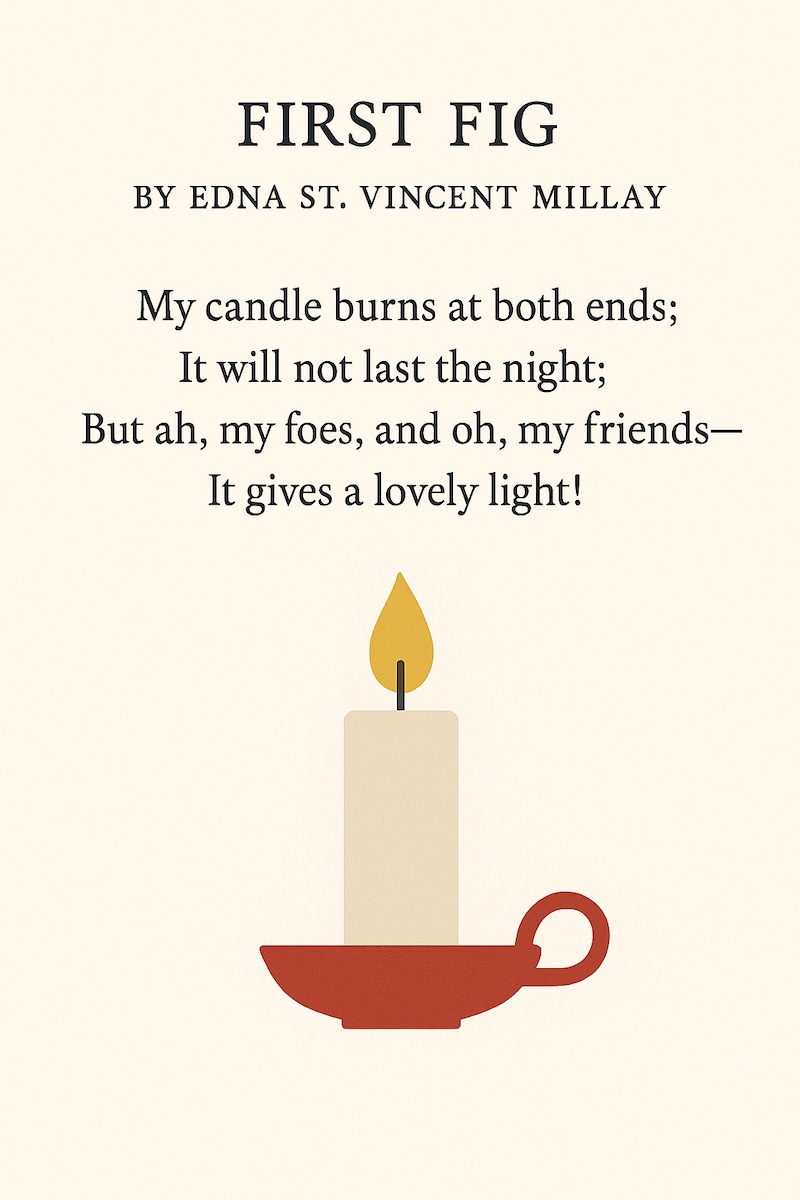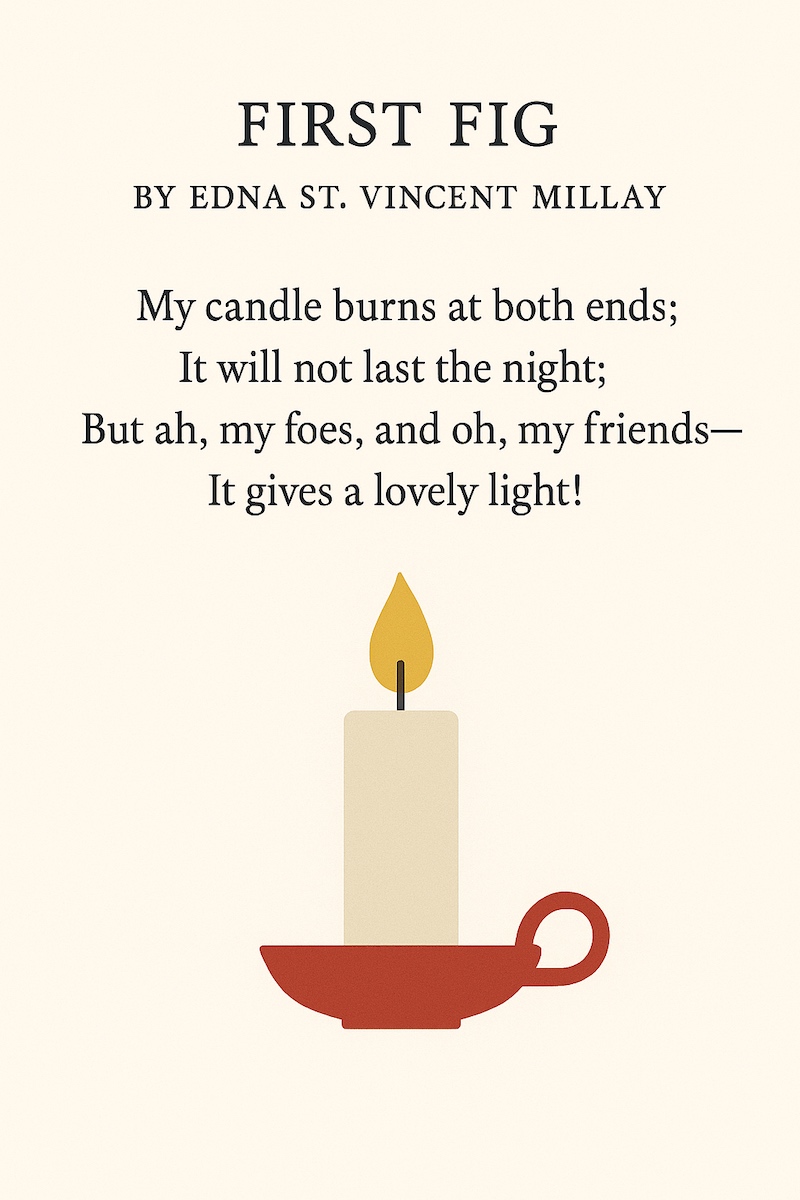"First Fig": Edna St. Vincent Millay's Celebration of Passion
Edna St. Vincent Millay's "First Fig," published in 1920, is an iconic four-line poem that serves as a powerful manifesto for living life with passionate intensity. Its famous lines perfectly distill the rebellious spirit of the Jazz Age, making it a fitting and foundational piece for The Concise Verse. It captures the essence of a beautiful but unsustainable philosophy—a vibrant light that burns quickly.
The Poem
My candle burns at both ends;
It will not last the night;
But ah, my foes, and oh, my friends—
It gives a lovely light!
The Insight: Intensity Over Longevity
The central image of the candle burning at both ends is the poem's core metaphor. This act is deliberately self-destructive; it ensures the light will be twice as bright but will extinguish twice as fast. Millay uses this image to champion intensity and experience over caution and longevity. She is making a deliberate choice: she prefers a brilliant, short life to a long, dim one.
The final couplet, with its emotional outburst ("But ah, my foes, and oh, my friends—"), suggests that this self-chosen lifestyle is a performance, visible to all who watch. The lovely light, the reward for her recklessness, justifies the inevitable—the candle will not last the night. The poem’s simple structure (AABB rhyme scheme) and traditional rhythm sharply contrast with its radical, modern message, making the statement even more impactful. It's a precise, four-line declaration of independence.

